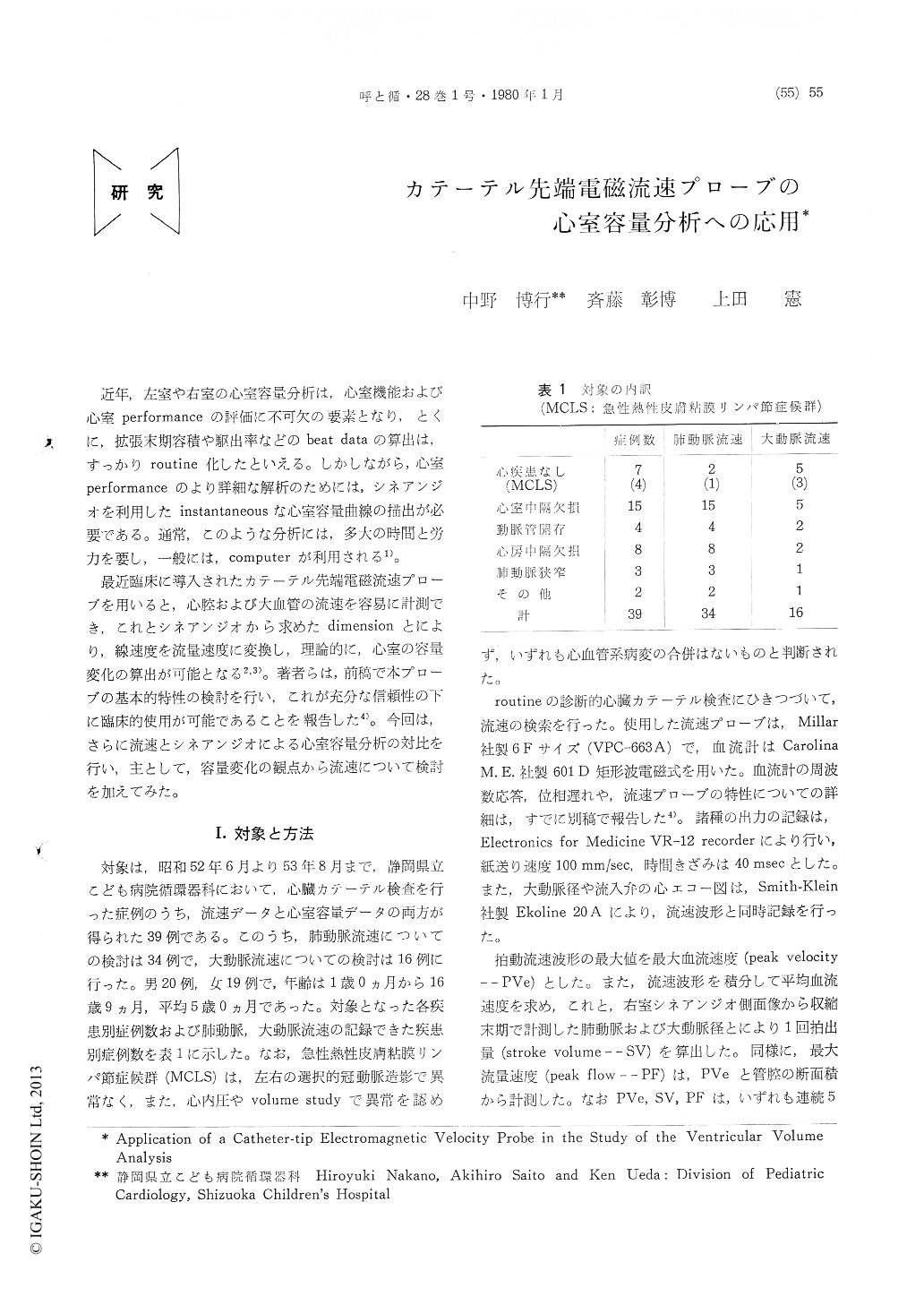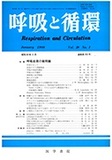Japanese
English
- 有料閲覧
- Abstract 文献概要
- 1ページ目 Look Inside
近年,左室や右室の心室容量分析は,心室機能および心室performanceの評価に不可欠の要素となり,とくに,拡張末期容積や駆出率などのbeat dataの算出は,すっかりroutine化したといえる。しかしながら,心室performanceのより詳細な解析のためには,シネアンジオを利用したinstantaneousな心室容量曲線の描出が必要である。通常,このような分析には,多大の時間と労力を要し,一般には,computerが利用される1)。
最近臨床に導入されたカテーテル先端電磁流速プローブを用いると,心腔および大血管の流速を容易に計測でき,これとシネアンジオから求めたdimensionとにより,線速度を流量速度に変換し,理論的に,心室の容量変化の算出が可能となる2,3)。著者らは,前稿で本プローブの基本的特性の検討を行い,これが充分な信頼性の下に臨床的使用が可能であることを報告した4)。今回は,さらに流速とシネアンジオによる心室容量分析の対比を行い,主として,容量変化の観点から流速について検討を加えてみた。
It is not easy to obtain accurate and smooth composite curves of ventricular volume in clinical cardiology. In this report, we investigated the application of flow velocity curve measured by a catheter-tip electromagnetic velocity probe to the analysis of ventricular volume.
Firstly, comparative studies of flow velocity and cineangiography confirmed that there was a general agreement with instantaneous right or left ventricular volume changes computed by both methods during ventricular systole and diastole.

Copyright © 1980, Igaku-Shoin Ltd. All rights reserved.


